Best Bedroom Colors for Relaxation and Restful Sleep

When creating a sleep-friendly home environment, every detail matters – from your mattress choice to the lighting, and especially the colors that surround you during those precious hours of rest. While our complete guide to better rest covers the full spectrum of sleep optimization, the psychology of bedroom colors deserves special attention. The right color palette can significantly impact your ability to fall asleep faster and enjoy deeper, more restorative rest. Scientific studies have shown that certain hues can lower heart rate and blood pressure, creating the perfect conditions for quality sleep.
What You’ll Discover in This Color Guide 🎨
🌙 Science-backed color choices that promote better sleep quality
😴 Worst bedroom colors that might be sabotaging your rest
🎯 Room-by-room recommendations for different sleep needs
💡 Professional tips for implementing calming color schemes
🌈 Color combinations that enhance relaxation
Ready to transform your bedroom into a sleep sanctuary? Let’s explore how the right colors can revolutionize your rest, as part of [Creating a Sleep-Friendly Home Environment: Your Complete Guide to Better Rest].
The Science Behind Colors and Sleep Quality
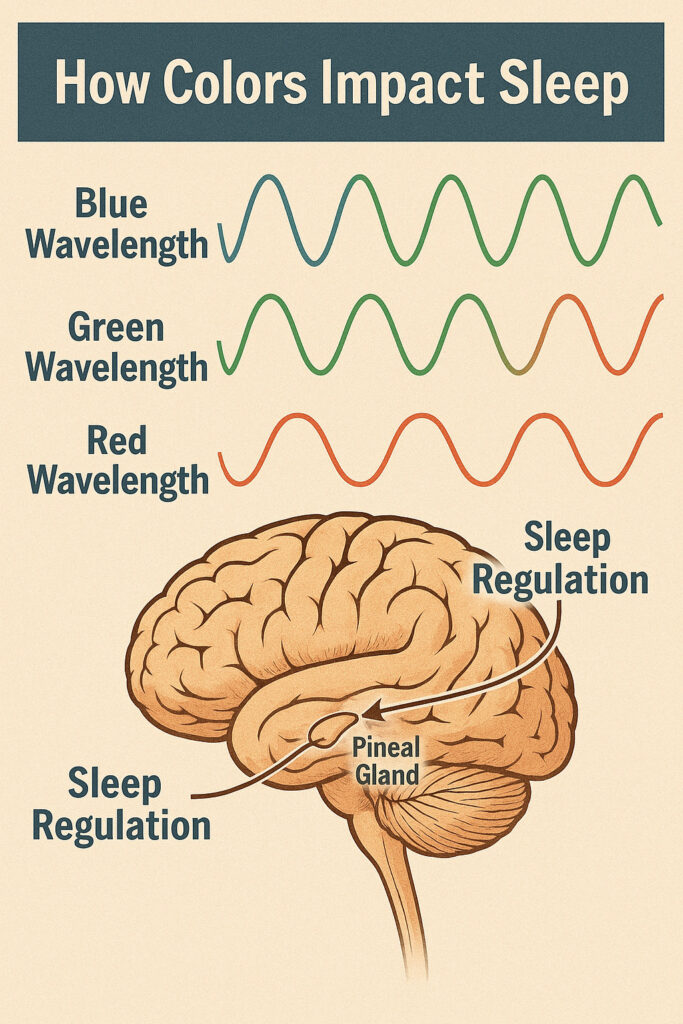
Did you know that exposure to certain colors can reduce cortisol levels by up to 23% within just 15 minutes? Your bedroom walls might be working harder than you think when it comes to preparing your body for sleep. The wavelengths of different colors directly influence your circadian rhythm and melatonin production, making color choice a crucial yet often overlooked aspect of sleep hygiene. While you might focus on finding the perfect mattress or blackout curtains, the colors surrounding you create the psychological foundation for restful sleep.
Top Sleep-Inducing Colors According to Research
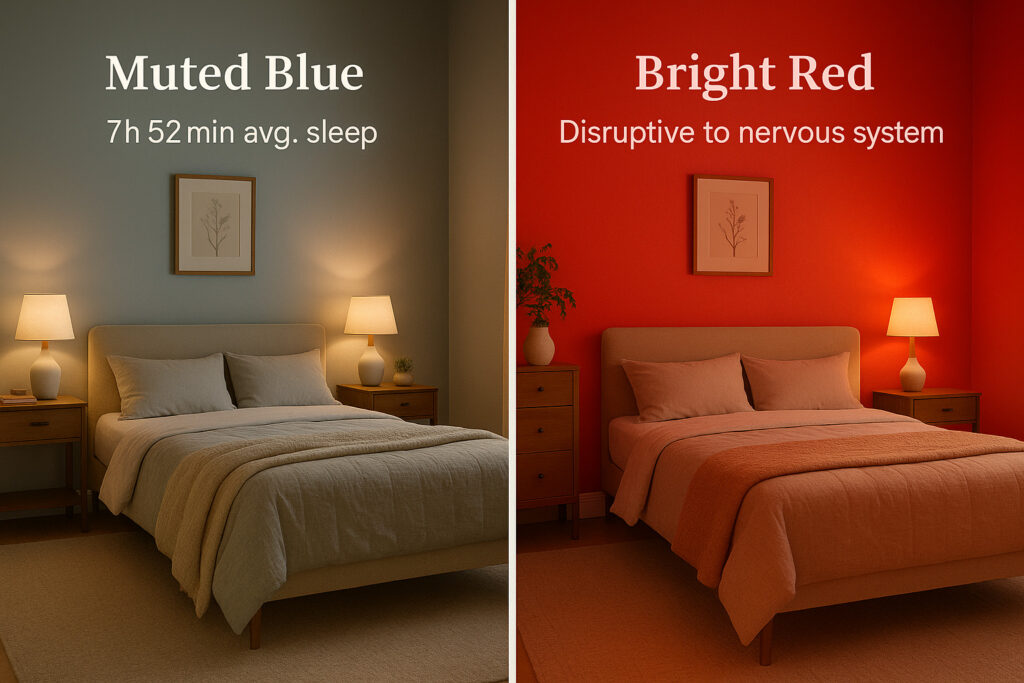
When sleep researchers analyzed thousands of bedrooms and their occupants’ sleep quality, certain colors consistently emerged as champions of rest. These scientifically-backed hues work with your body’s natural processes to promote relaxation:
Blue leads the pack, with studies showing people in blue bedrooms average 7 hours and 52 minutes of sleep nightly. The human eye contains special receptors called ganglion cells that are most sensitive to blue, sending calming signals directly to your brain.
Pro Tip: Not all blues are created equal for sleep. Opt for muted, grayish blues rather than bright or electric blues, which can have the opposite effect on your nervous system.
Colors That Complement Different Sleep Styles

Your ideal bedroom color might depend on your specific sleep challenges and preferences. Here’s how different hues address various sleep needs:
For Hot Sleepers: Cool greens and soft grays create a psychological cooling effect
For Anxious Minds: Lavender and pale purple promote mental calmness
For Light Sleepers: Deep, muted earth tones minimize visual stimulation
For Shift Workers: Warm neutrals adapt well to different lighting conditions
Remember, these color choices work best when combined with other sleep-friendly elements from our [complete sleep environment guide].
Strategic Color Implementation Techniques
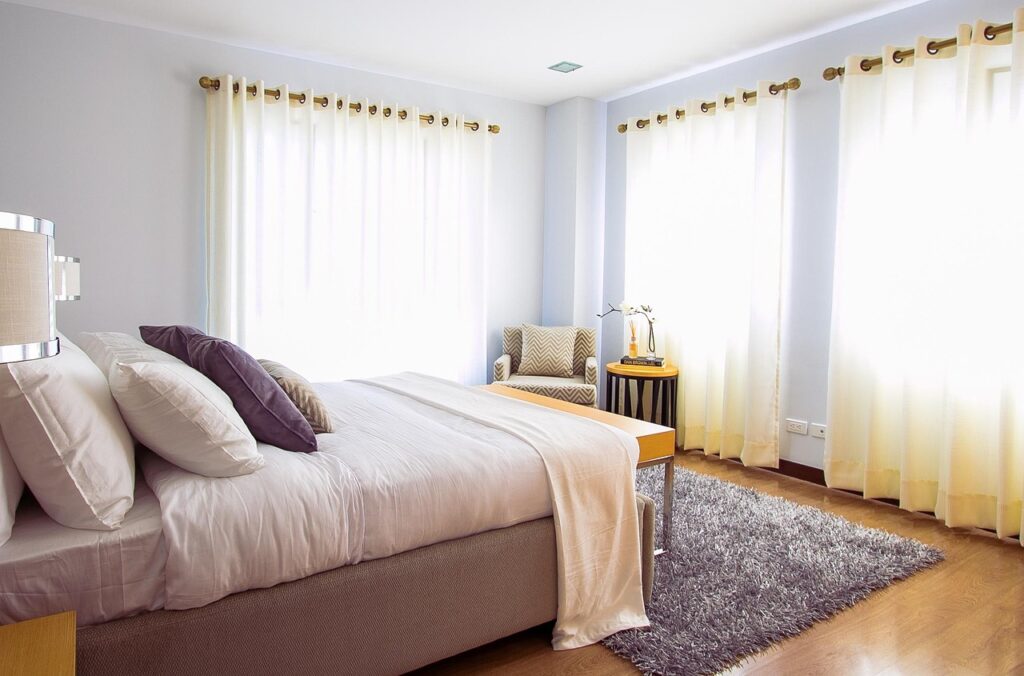
Transform your bedroom into a sleep sanctuary with these expert-approved color strategies:
- Start with one accent wall in your chosen sleep color – this creates impact without overwhelming the space
- Layer similar tones through bedding, curtains, and accessories for a cohesive, calming effect
- Include natural wood tones to ground the space and add warmth without stimulation
- Use the 60-30-10 rule: 60% dominant color, 30% secondary, 10% accent
Success Story: Sarah, a chronic insomniac, repainted her bright yellow bedroom in soft sage green. Within two weeks, she reported falling asleep 20 minutes faster and experiencing fewer night wakings.
Avoiding Common Color Mistakes in the Bedroom

Even with the best intentions, certain color choices can sabotage your sleep quality. Here’s what to watch out for:
Regional Considerations: In sunny climates, cooler colors help counteract heat, while northern regions might benefit from warmer (but still muted) tones during winter months.
⚠️ Important Note: Avoid these sleep-disrupting colors:
- Bright reds and oranges (increase heart rate)
- Vibrant yellows (overstimulate the mind)
- Dark purples (can trigger vivid dreams or nightmares)
- Pure white (creates too much visual brightness)
For those dealing with specific sleep issues like back pain, color choice becomes even more crucial. Consider reading about the [Best Mattress for Back Pain] to complement your color therapy approach.
Creating Your Personalized Sleep Color Palette

Now that you understand the science behind bedroom colors and their impact on rest, it’s time to create your personal sleep sanctuary. The key is choosing colors that not only promote physical relaxation but also resonate with your personal style and preferences. Remember, the most effective bedroom color scheme is one that makes you feel genuinely calm and comfortable.
As part of your broader sleep environment optimization, consider how your color choices interact with other sensory elements. The synergy between visual calm and other relaxation techniques can dramatically improve your sleep quality.
Frequently Asked Questions About Bedroom Colors 🤔
🎨 Can I use multiple colors in my bedroom, or should I stick to one?
While monochromatic schemes are inherently calming, you can successfully use 2-3 complementary colors. The key is maintaining a cohesive palette with similar saturation levels – avoid high contrast combinations that create visual tension.
🌙 How long does it take for new bedroom colors to impact sleep quality?
Most people notice initial improvements within 3-5 nights as their nervous system adapts to the new environment. Full benefits typically manifest within 2-3 weeks of consistent exposure.
💡 Should bedroom colors change with the seasons?
While repainting seasonally isn’t practical, you can adapt your color scheme through bedding and accessories. Add warmer accents in winter and cooler touches in summer while maintaining your base calming colors.
🏠 Do ceiling colors matter for sleep quality?
Absolutely! Ceilings painted in soft, receding colors (like pale blue or light gray) can make the room feel more spacious and peaceful, contributing to better sleep.
Your Next Steps to Better Rest Through Color
Ready to transform your bedroom into the ultimate sleep sanctuary? Here are your action items:
Start with our comprehensive guide: Creating a Sleep-Friendly Home Environment: Your Complete Guide to Better Rest
Explore complementary sleep solutions:
- How to Use Aromatherapy for Better Sleep – Combine calming scents with your new color palette
- Do Blackout Curtains Really Help You Sleep? – Maximize the impact of your color choices with proper light control
Have you experimented with bedroom colors to improve your sleep? What combinations worked best for you? Share your experience in the comments below and help others discover their perfect sleep palette!
About the Author

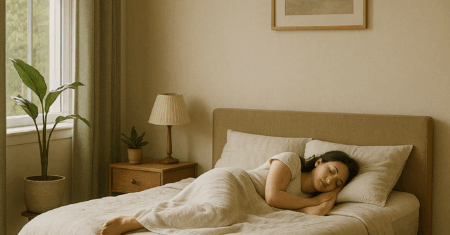
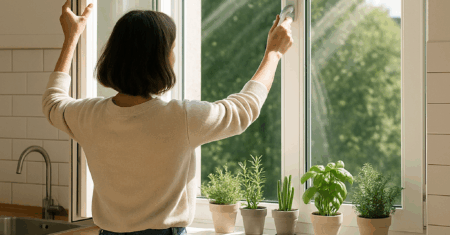

0 Comments